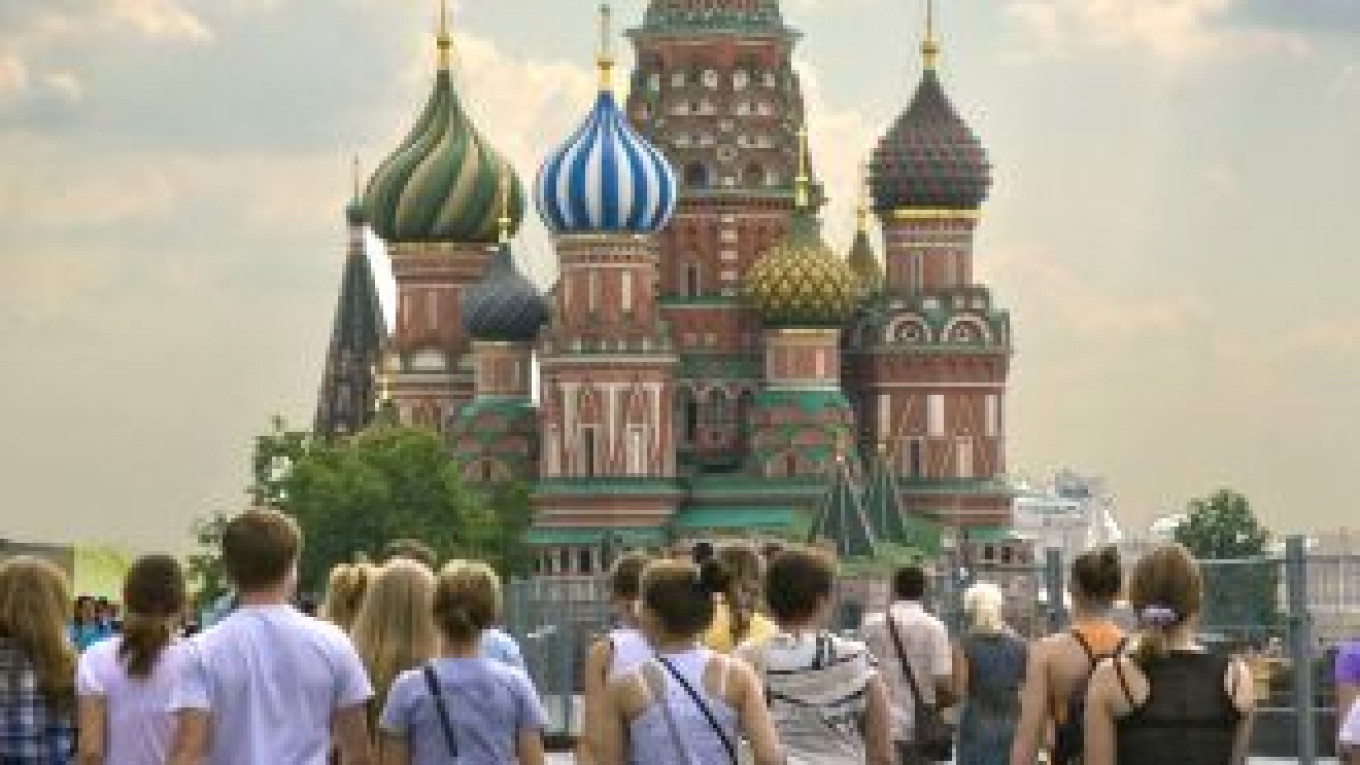Russia will celebrate the 450th anniversary of St. Basil’s Cathedral by opening an exhibition dedicated to the so-called “holy fool” who gave his name to the soaring structure of bright-hued onion domes that is a quintessential image of Russia.
The eccentrically devout St. Basil wore no clothes even during the harsh Russian winters and was one of the very few Muscovites who dared to lambast tyrannical Tsar Ivan the Terrible.
Ivan, whose gory purges claimed tens of thousands of lives, feared St. Basil as “a seer of people’s hearts and minds,” according to one chronicle. He personally carried St. Basil’s coffin to a grave right outside the Kremlin.
The cathedral, constructed to commemorate Ivan’s victory over Mongol rulers, was built on the burial site.
Deputy Culture Minister Andrei Busygin said Friday that the exhibition is opening Tuesday as part of anniversary celebrations in the cathedral after a decade-long restoration that cost 390 million rubles ($14 million). The exhibition will display relics and icons of St. Basil and other religious eccentrics, who were known as “holy fools.”
The exhibition will be part of massive celebrations of St. Basil’s anniversary that will also include a service to be held by Russian Orthodox Patriarch Kirill and a late-night church bell concert.
“This cathedral is a shrine and a symbol of Russia,” Busygin said. “It’s a miracle that it survived at all.”
The building was severely shelled during the 1917 Bolshevik takeover of the Kremlin and was patched up during the subsequent civil war and famine.
“Those gaping wounds were stuffed with whatever was at hand,” said Andrei Batalov, deputy director of the State Kremlin Museums.
Early Communist leaders — who persecuted countless clerics of all faiths and destroyed tens of thousands of religious buildings — wanted St. Basil’s dynamited because it blocked the way for military parades, and only the cathedral’s conversion into a museum saved it.
A century earlier, Napoleon Bonaparte also ordered St. Basil’s blown up during his army’s hasty retreat from Moscow in 1812, but a heavy rain put out the burning fuses.
Originally named the Holy Trinity Cathedral, over the centuries it became known as where St. Basil is buried.
The design of its nine onion-shaped, multicolored domes combines the traditions of Russian wooden architecture with Byzantine and Islamic influences into a unique structure.
Batalov said the restoration focused on recreating the way the building looked by the late 17th century, when the nine domes were united by a wraparound floor.
By that time, St. Basil’s became a symbolic New Jerusalem and the center of Palm Sunday walks, when the Moscow Patriarch approached it sitting on a donkey to recreate Jesus’ arrival in Jerusalem.
A Message from The Moscow Times:
Dear readers,
We are facing unprecedented challenges. Russia's Prosecutor General's Office has designated The Moscow Times as an "undesirable" organization, criminalizing our work and putting our staff at risk of prosecution. This follows our earlier unjust labeling as a "foreign agent."
These actions are direct attempts to silence independent journalism in Russia. The authorities claim our work "discredits the decisions of the Russian leadership." We see things differently: we strive to provide accurate, unbiased reporting on Russia.
We, the journalists of The Moscow Times, refuse to be silenced. But to continue our work, we need your help.
Your support, no matter how small, makes a world of difference. If you can, please support us monthly starting from just $2. It's quick to set up, and every contribution makes a significant impact.
By supporting The Moscow Times, you're defending open, independent journalism in the face of repression. Thank you for standing with us.
Remind me later.






